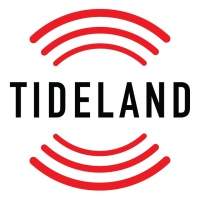Tideland’s SB-2200 and SB-138 polyethylene buoys, complete with MLED-140 marine lanterns fitted with the high-performance MaxiHALO-60 LED Flasher, along with mooring equipment, have been deployed in the new LNG port at Soyo in the north of Angola to mark the newly dredged access channel and turning circle.
The installation was designed in collaboration with Boskalis, which was responsible for civil engineering aspects of the project, including the dredging and reclamation of 140ha of land.
In addition to supplying the aids to navigation, Tideland supervised the installation of the nine large buoys and ten of the smaller SB-138s, complete with lanterns, mooring kits and sinkers.
A Tideland SeaBeacon2 System 6 racon is installed on one of the larger buoys configured as a cardinal marker with an MLED-140 MaxiHALO lantern to mark a reef outside the channel. Four pairs of SB-2200s with MLED-140 MaxiHALO lantern (range 5Nm) are deployed to mark the port and starboard extremes of the entrance to the approach channel. SB-2200 features an asymmetric twin keel hull design that enables it to remain upright in fast currents, optimising the performance of the lantern beam for range and visibility.
Ten Tideland SB-138P buoys in various configurations, complete with MLED-140 MaxiHALO lanterns, mark the navigable limits of the inner channel. Both SB-2200 and SB-138 are entirely manufactured from rotationally moulded polyethylene with a solid core of expanded polystyrene foam and are virtually unsinkable as the integral foam core will prevent excessive water ingress in the event of a collision. In addition to offering a
service life of up to 20 years, low maintenance requirements, reduced weight and exceptional resistance to damage and marine growth, the buoy may be fully recycled at the end of its life.
The rotational moulding process ensures a seamless body, using a mould which provides increased thickness of polyethylene at major stress points in the structure. Before moulding, the polymer is compounded with UV inhibitors and pigment so that the wall thickness is evenly UV-stabilised and colour is permanent and uniform throughout. As a result, painting is never necessary.
A Tideland SB-2200 buoy configured as a cardinal marker and fitted with a SeaBeacon2 System 6 racon and MLED-140 MaxiHALO lantern marks a reef outside the channel into the Port of Soyo.
The Angola LNG project is the country’s largest single investment ever and utilizes natural gas that would otherwise be flared off. Angola LNG, which is responsible for construction and implementation, is a consortium of Sonangol Gás Natural (36.4%), Chevron (36.4%), BP (13.6%) and Total (13.6%).
Initially, the project will use natural gas from Cabinda and from Blocks 14, 15, 17 and 18, as well as from the dedicated non-associated gas fields (Quiluma, Enguia North, Atum and Polvo). The offshore gas will be collected and transported to an onshore liquefaction plant located near the town of Soyo in Zaire Province. In addition to reducing flaring and greenhouse gas emissions, it facilitates continued offshore oil field development, and contributes to the development of a future natural gas-based industry within Angola.
The Angola LNG project is expected to receive approximately one billion cubic feet of associated gas per day and produce 5.2 million tons of LNG per year, as well as related gas liquids products. It is also expected to process and treat up to 125 million cubic feet per day of gas for use in industrial projects.
The first LNG production is expected by early 2012 to be delivered into the US natural gas market via the Clean Energy re-gasification terminal near Pascagoula, Mississippi, which is under development by Gulf LNG Energy LLC.
Approved to ISO 9001:2008, Tideland Signal is a British-based member of the Tideland group of companies, which specialises in the design and manufacture of aids to marine navigation. The Tideland Group is independently owned and has its headquarters in Houston, Texas.

